Tech Tuesday: Product Update Global Shear Plate and Single Angle Placement
To be more specific this is a Preference Setting update that focuses on the Global Shear Plate and Single Angle Placement.
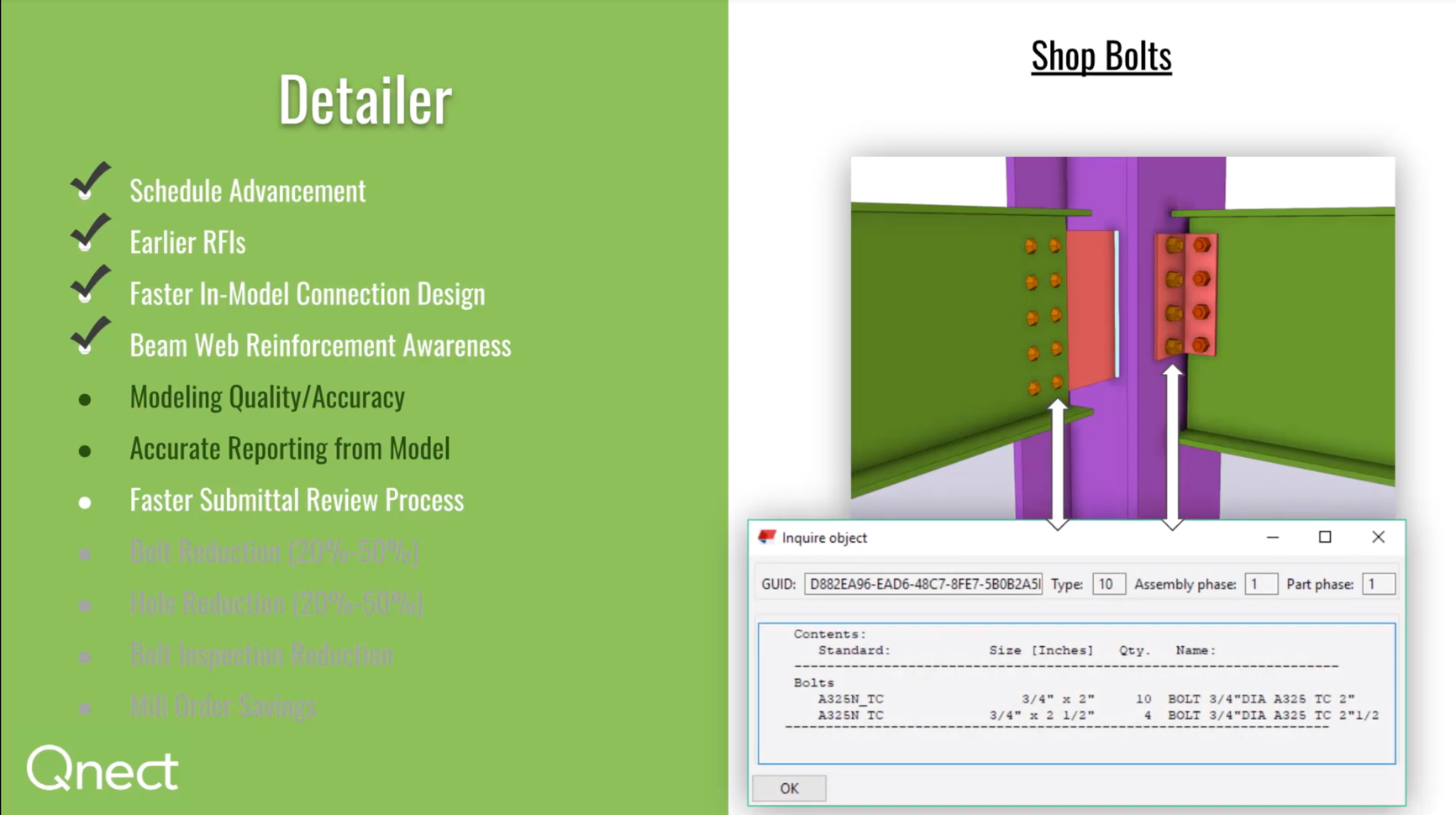
What does Qnect do for the Steel Detailer? In today's post, we are going to take one of our most re-watched webinars "The True ROI of Qnect" and focus in on the detailer. Hosts Aaron Bartlett and Josh Hines focus on a few key topics including:
View the video below and below that is the video transcript with images to follow along. So read or watch and enjoy! We hope to hear from you- Contact Us.
Once the model has been prepped and the preferences have been completed you're literally looking at three to five connections a second.
You'll notice in each one of these if you see a white font that applies as you can see on the right-hand side of our screen as well. The ones that do not apply will be in gray.
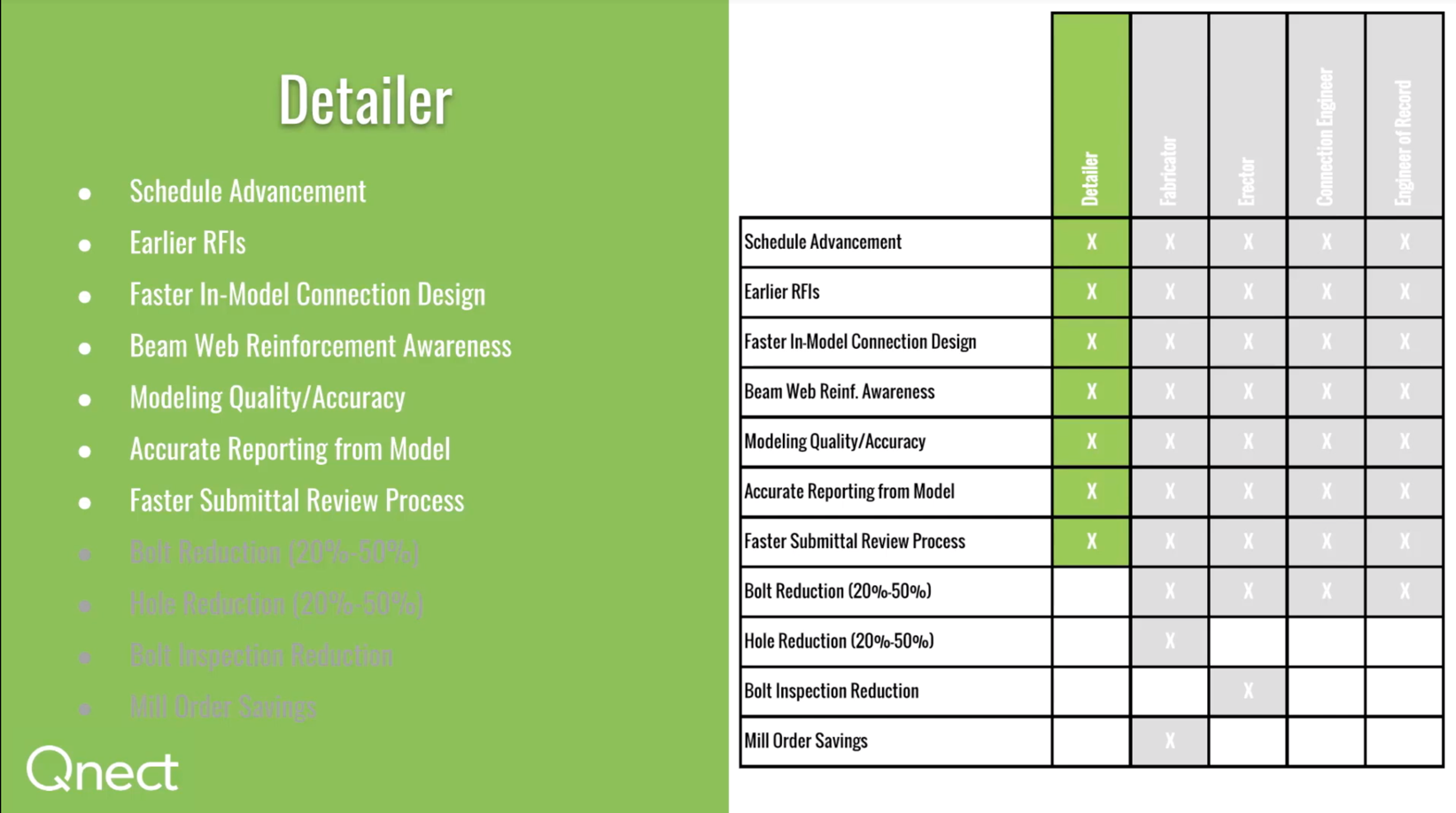
Let's look at schedule advancement. Schedule advancement you know when it comes to us, what does that really mean? Well, when we get into an environment with modeling, at least from a detailing perspective, you know we have a stick model. You know there's no connections and we have to then go in [and] start designing some of this or taking the design that's already provided to us or a mixture of both and then starting to create those connection components in Tekla manually.
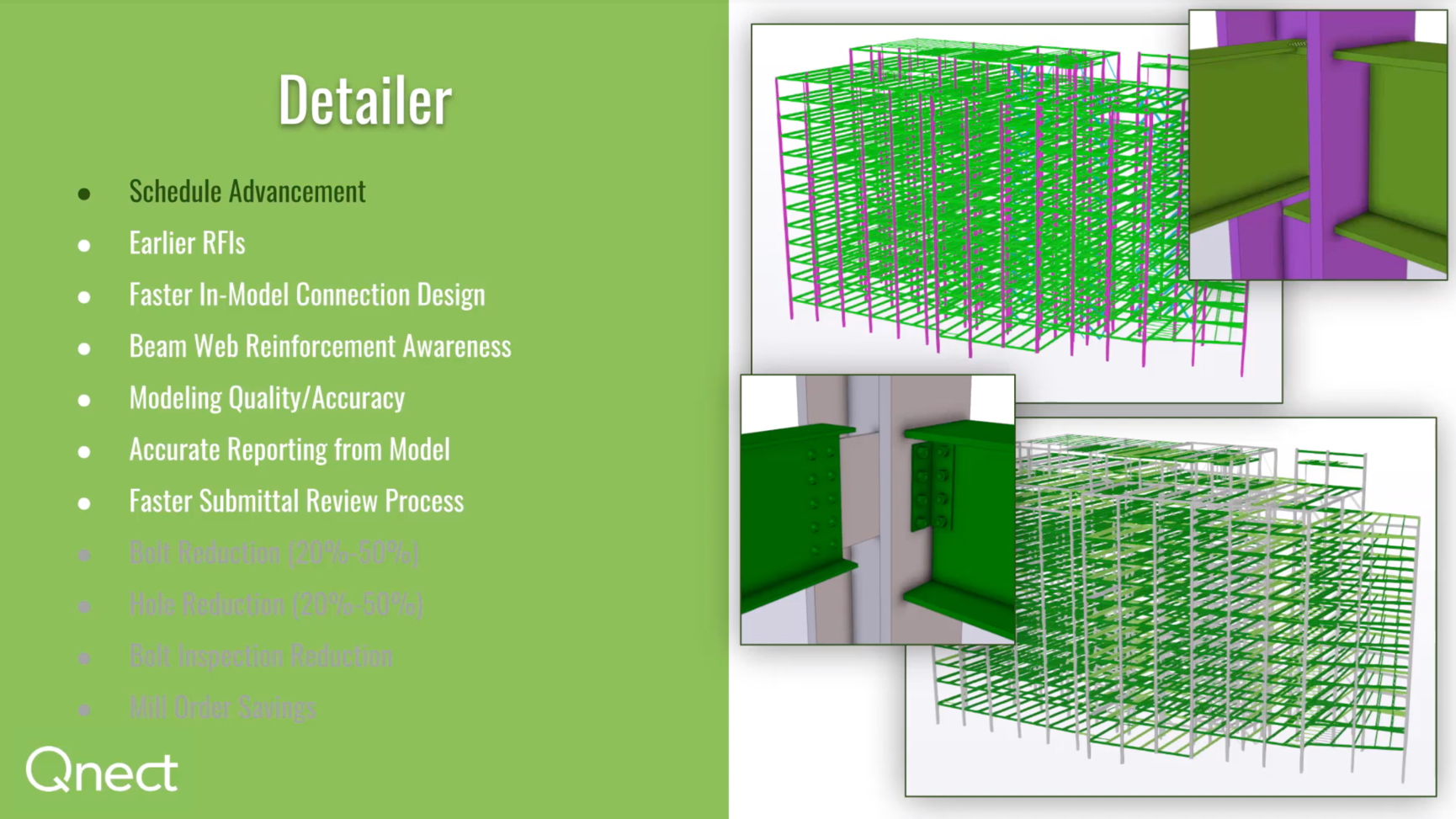
With Qnect you don't have to do that. Typically 60 to 80 percent of your structure is gonna come in not only connected as you can see but also with the calcs. We have all the backup for those connections we've been able to do. Think of what that will do from a schedule standpoint. As a detailer obviously their speed for schedule and following down the line what's that going to do for everybody else's schedule getting in front of things.
Let's get into RFI's earlier RFI's. Typically with an RFI you're not gonna get into an environment until you hit it. So as a detailer you know you may be working on the first sequence as you can see highlighted here (in blue).
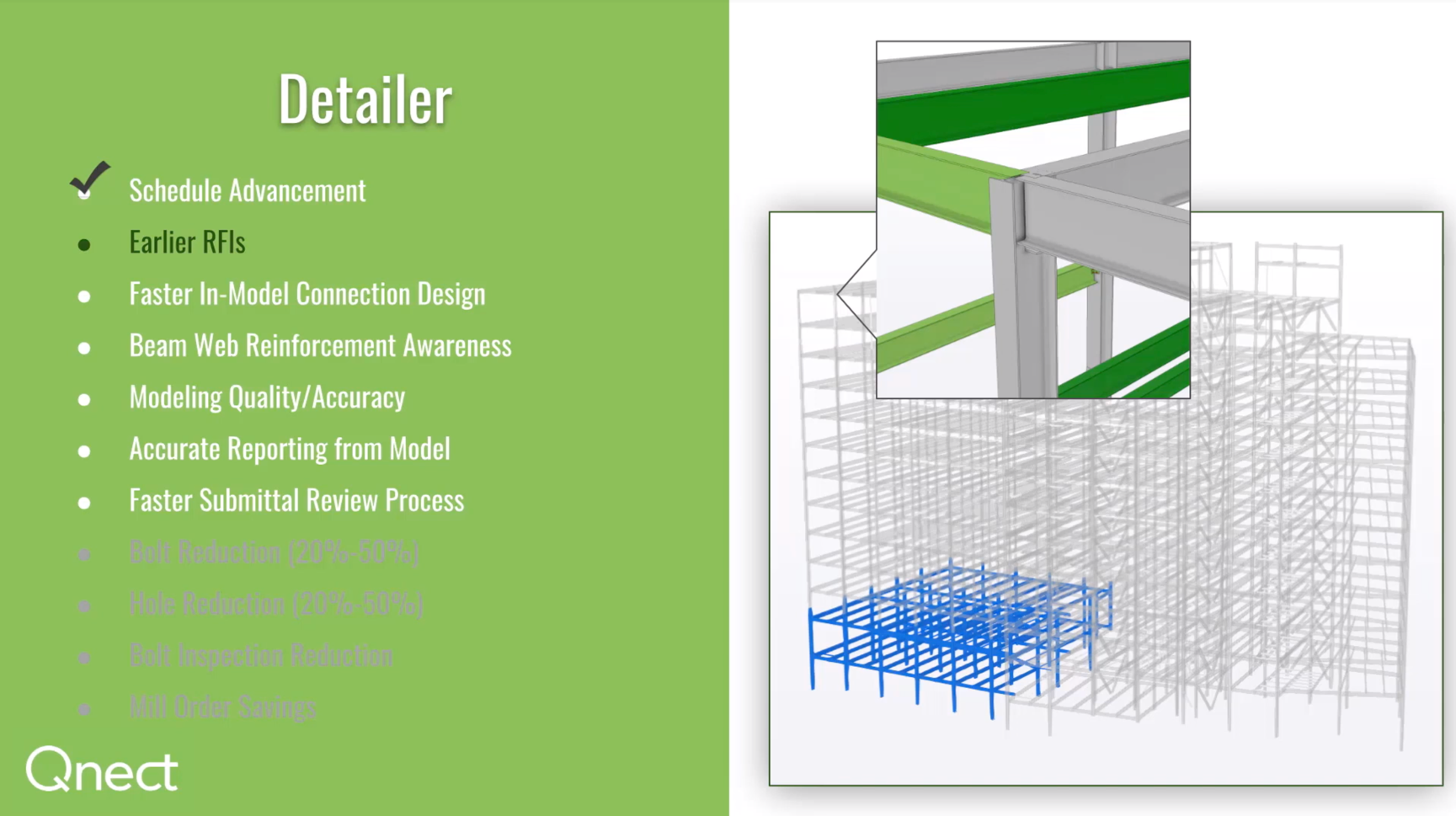
But why not look further up the structure? You really have the ability to do that with the connections. Imagine looking in this area knowing, “you know what I couldn't connect some of the connections up in this area” but I can now have somebody go in and say, “you know what this is more unique it doesn't really work with the specific design criteria provided.” I can actually ask an RFI early on and I can have that back with the answers or sketches the information I need. I can actually model that in once I get to that point without having to ask an RFI later. Then [I can] faster in model connection design so you know obviously this kind of pertains a schedule as well but you know we're not only getting connection design early; it's actually being modeled. It's faster in the form that it is physically being placed into your model. So once the model has been prepped and the preferences have been completed you're literally looking at three to five connections a second.
We're gonna go through some of these projects very quickly:
Most of our projects result in 60% to 80% of the structural connections being completed in an initial run. We know some of our users don't always do an initial run; as far as time savings they may just do a run of the entire sequence that they're working on but you have the ability to find out that 60 to 80 percent you can go ahead and back it back out of the model take it back out of the model. But you can at least know the value of what you're gonna be expecting in this project upfront and that's that 60 to 80%.
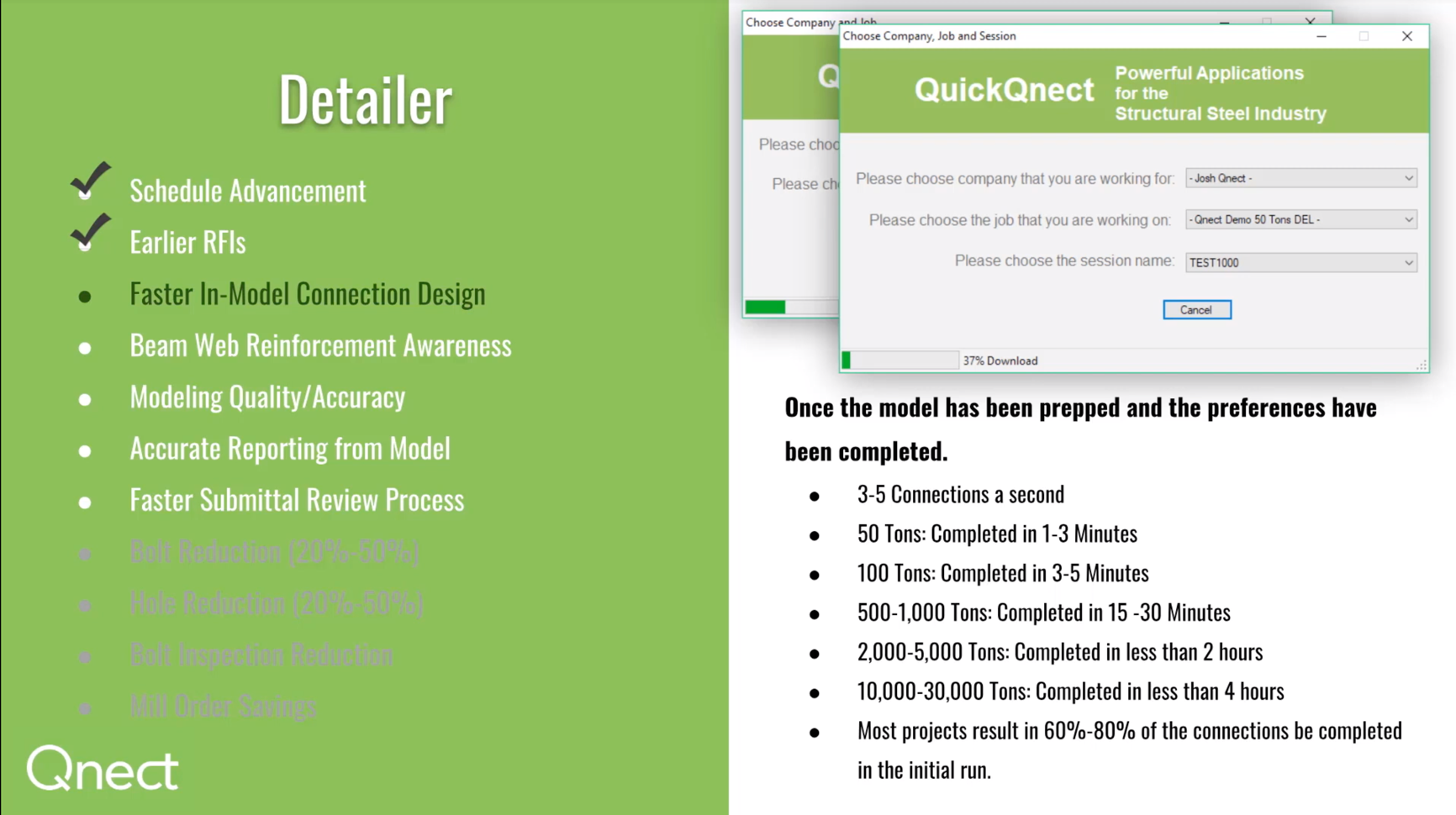
Let's move on to beam web reinforcement and the awareness of that. There's a couple things here on most projects nobody really knows where these are going to occur from any level. Not only are we aware of them and we can provide a report showing this information at beginning stages [but] we will also model this back into the model where it applies. For instance, we have a 12x14 that requires 37 Kip reaction and we were able to meet that with only a capacity of 32.27 - We require a 5/16x9 1/2x8 inch web reinforcements plate as you can see in dark green on the screen.
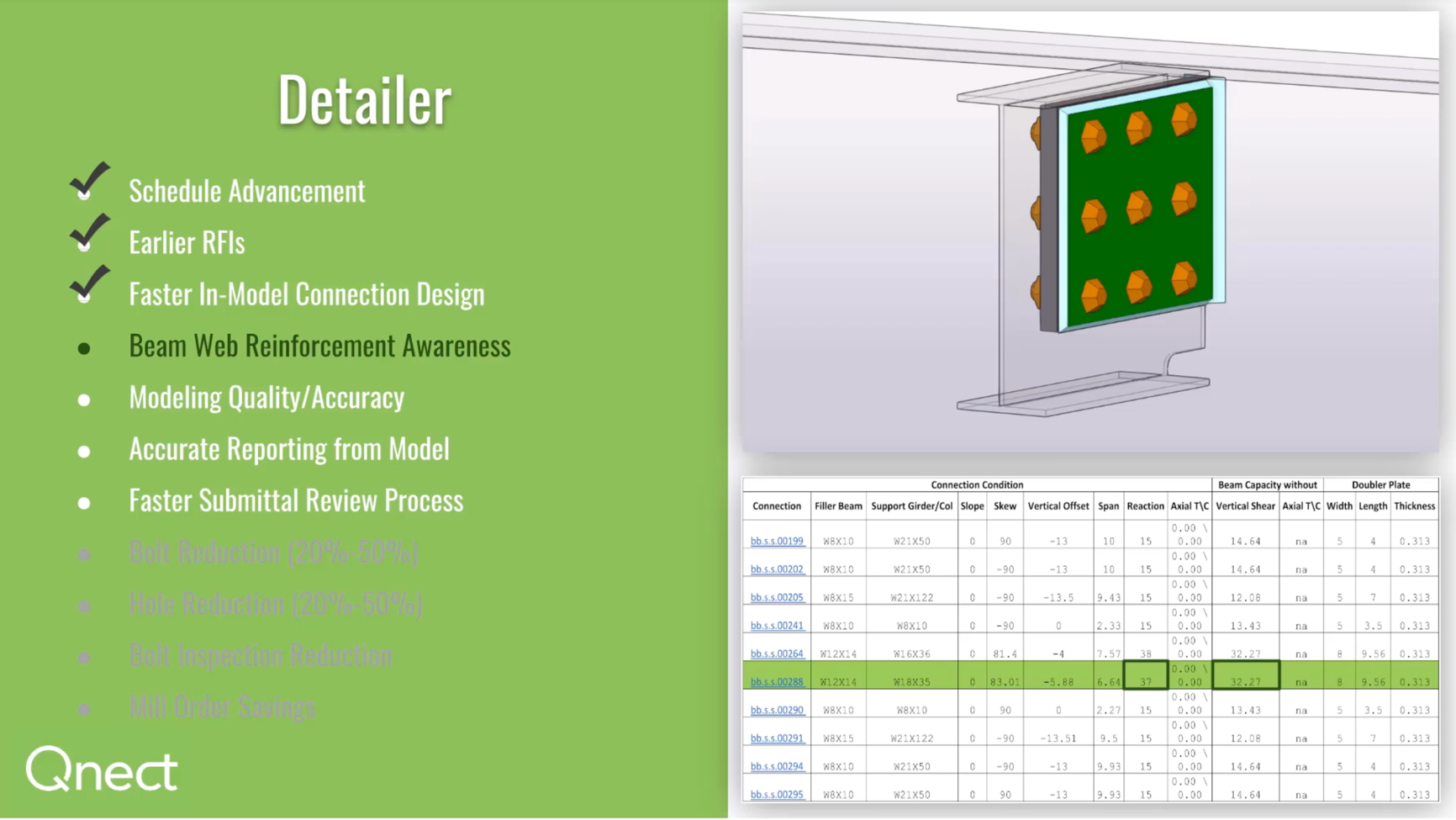
Not only do we know that it exists it's been modeled in you can see that all the welds are associated. Everything's a hundred percent modeled in there and we also have a report showing you know that we only met that at 32 at a 32 Kip capacity. So go ahead and look at the first line item. It requires 15 Kip reaction we met that with 14 Kips. Well something like this can be very valuable that we can provide to a connection engineer or an engineer of record and say, “listen do we really need 37 Kip's? We're able to make it at 32 can you reduce that you know dig into this and see if we can remove these from the project?” A lot of time savings in the shop and less hassle with a general contractor trying to negotiate changes later.
Now let's look at modeling quality and the accuracy of that as well as the accurate reporting that can come out of the model. As you see on the screen not only do we bring the connections in they come in accurately you know everything's there it's not just some of the information. Field bolts not only are they modeled they are there you can report that information. Same with shop bolts, you know you can get the right quantities right size right length all that information you're looking for.
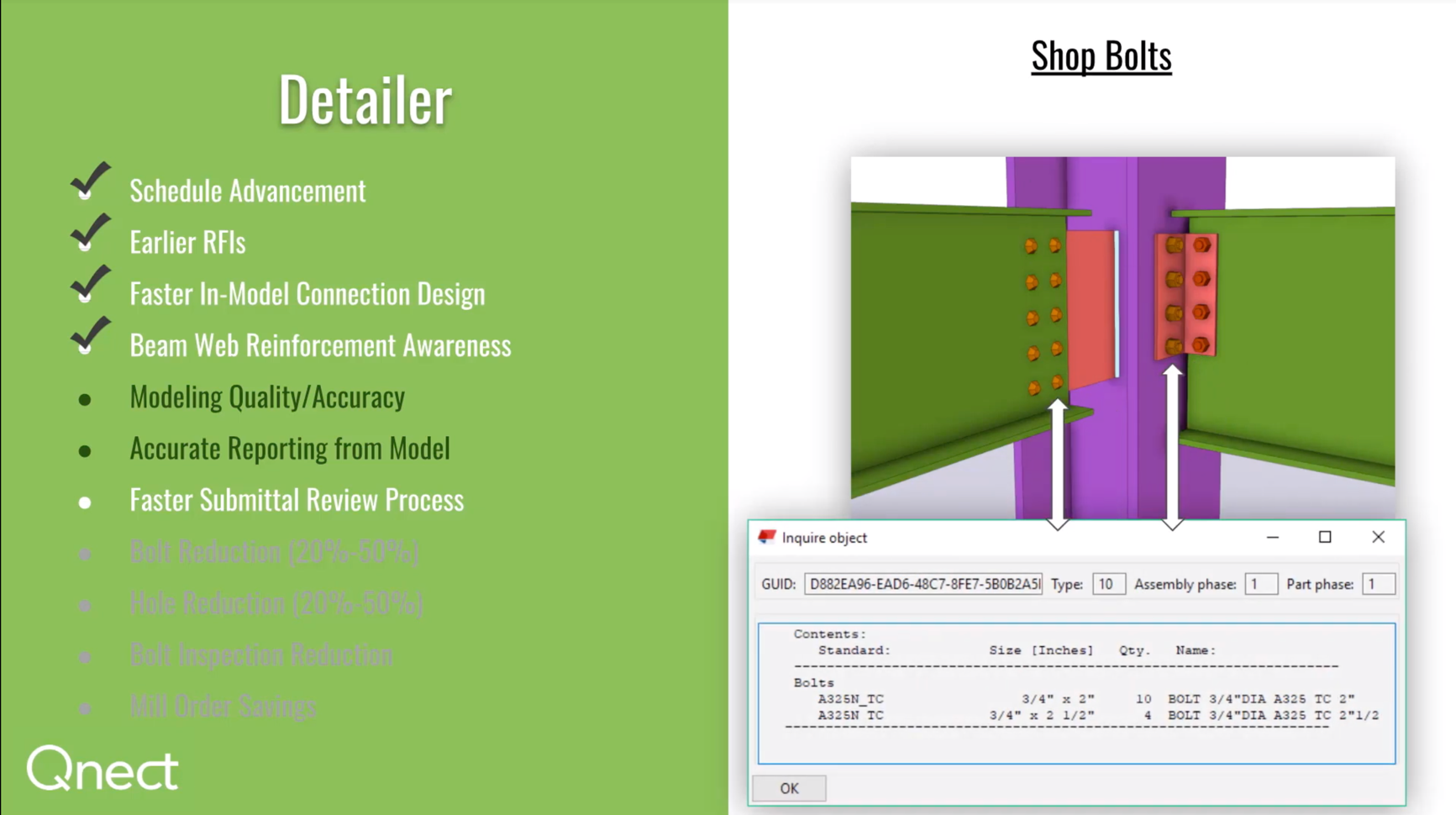
Then this is the very important one for most of us is the welds. Unfortunately in a lot of cases in past experiences and we've heard this from a lot of our users is welds are not accurately placed in a model so then they are manipulated later on the 2D drawings as well as changes come through the manipulations don't follow through again it's no longer automated from the model. It becomes a problem where you're not having accurate welds.
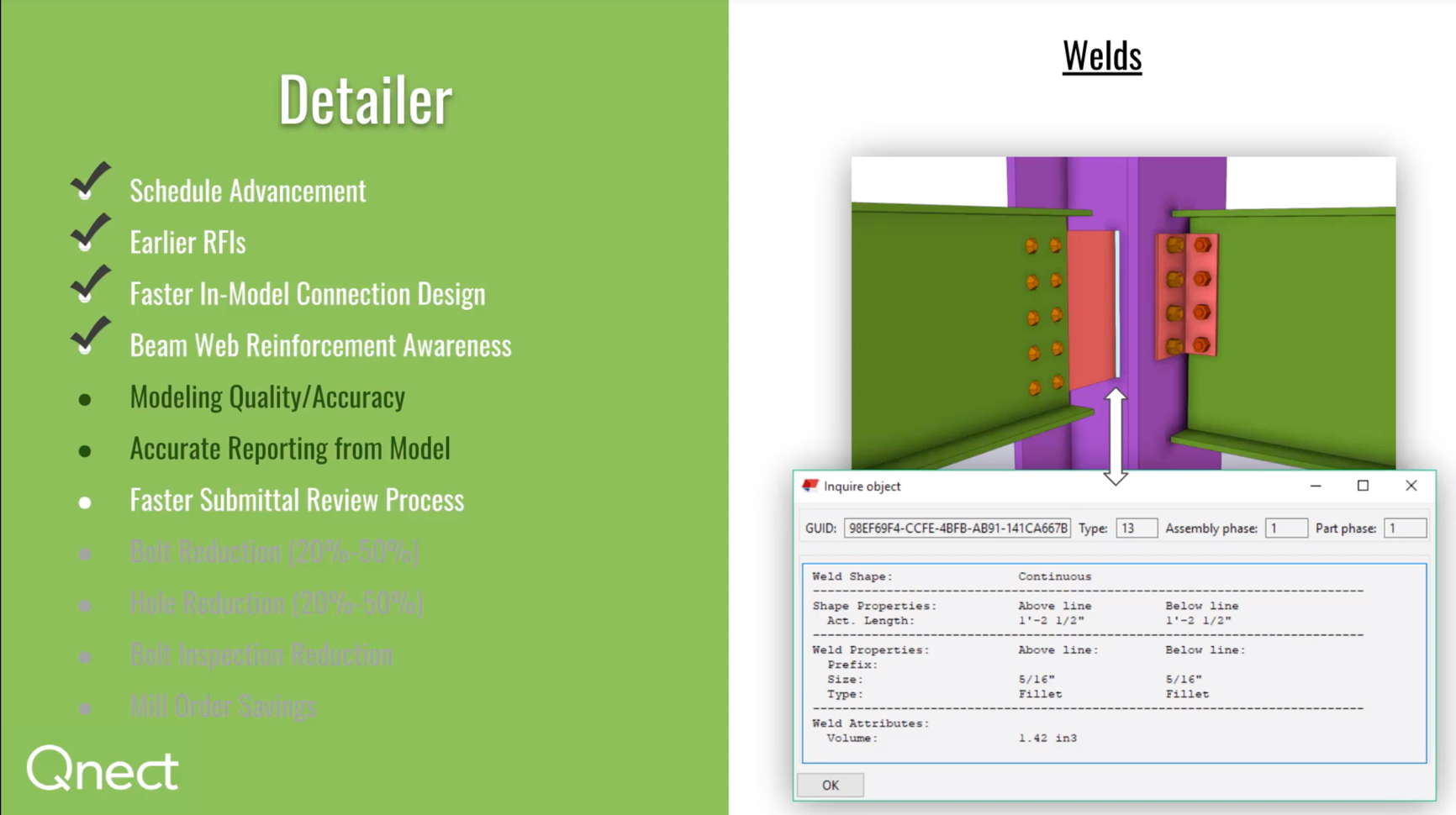
We bring everything in our connection component:
Let's look at a faster submittal review process whether this is a review with the CE, you know the connection engineer for the fabricator, or detailer or whether this is an actual submittal for approval with the EOR. With Qnect we can provide we or you can accomplish providing 2D Code map. In that code map you'll notice that we have our start and end handles and what along with that is going to be a connection code. You can also if you'd like you don't have to but you can also have the reaction required and the capacity in which we met that. You can also create a code map simply from copying your framing plan that's already been done and then just taking the template information that we give you and you don't have to do all that extra legwork.
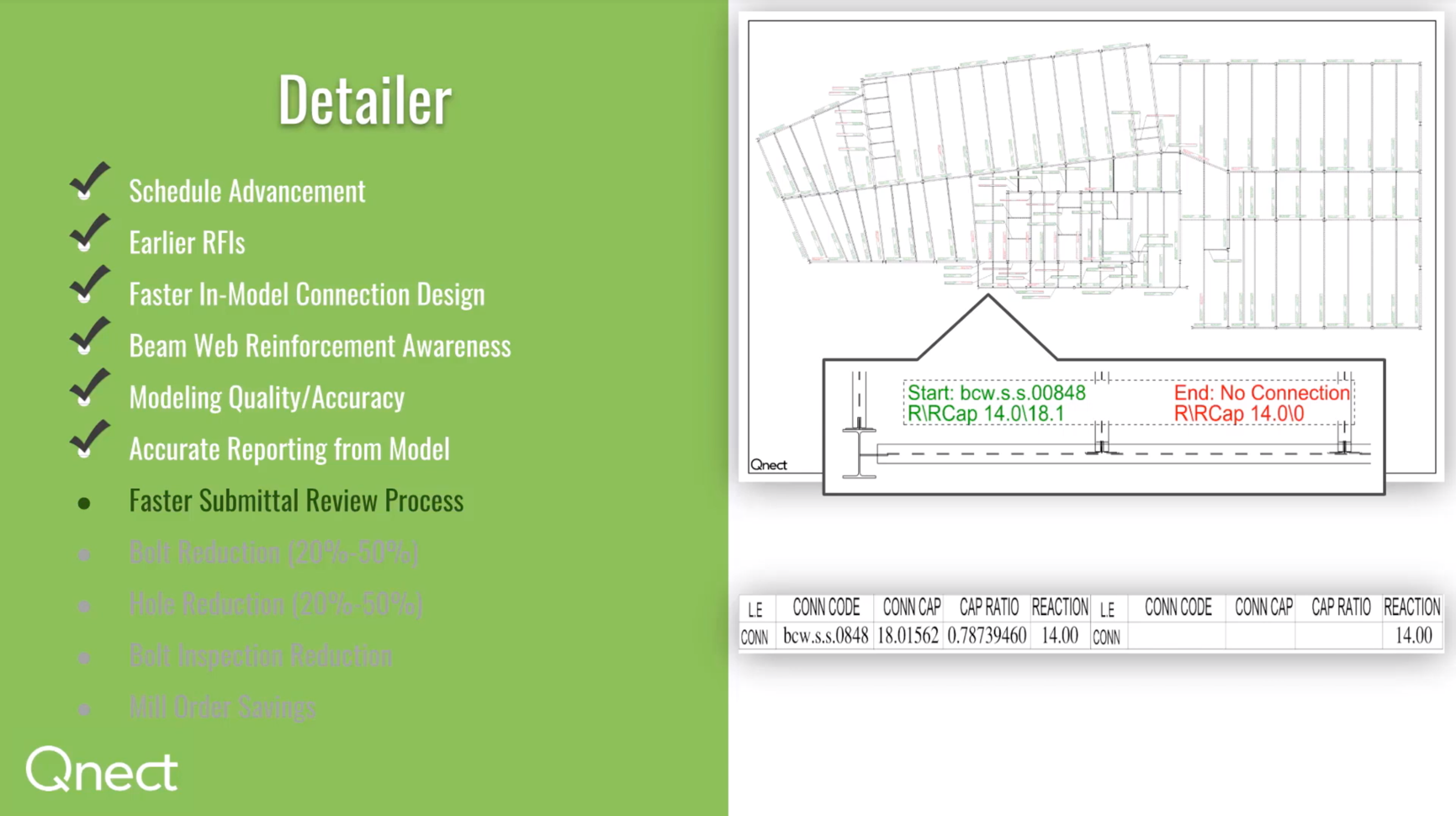
You’ll also notice that this is coming from a shop drawing the same information can be placed on to a shop drawing. As you see here and we can help make custom templates that will be used for shop drawings this was for an EOR you know they wanted to see that same type of stuff to start and end handle information but they also wanted their approval stamp associated to that. So you can see how that also helps.
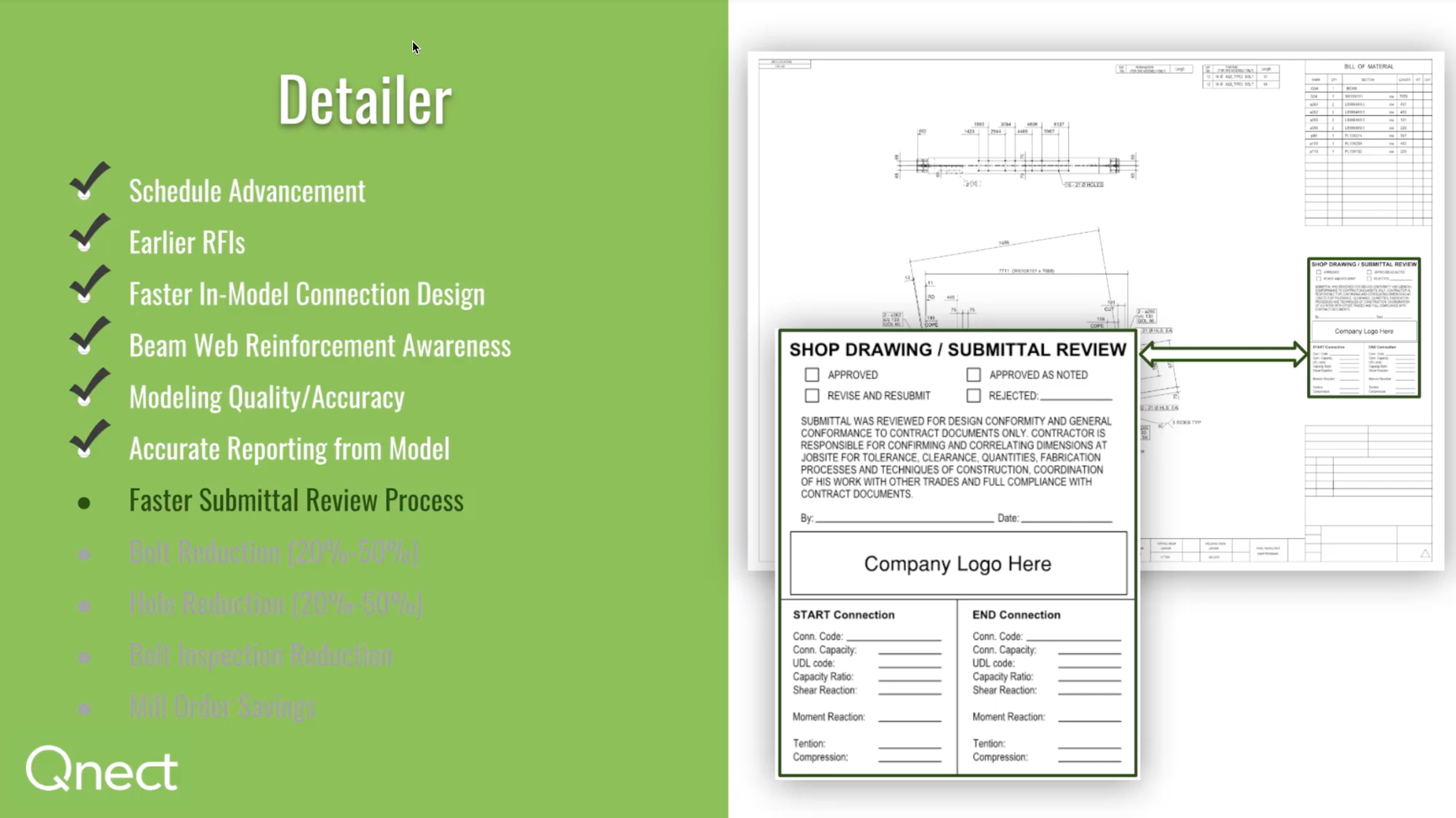
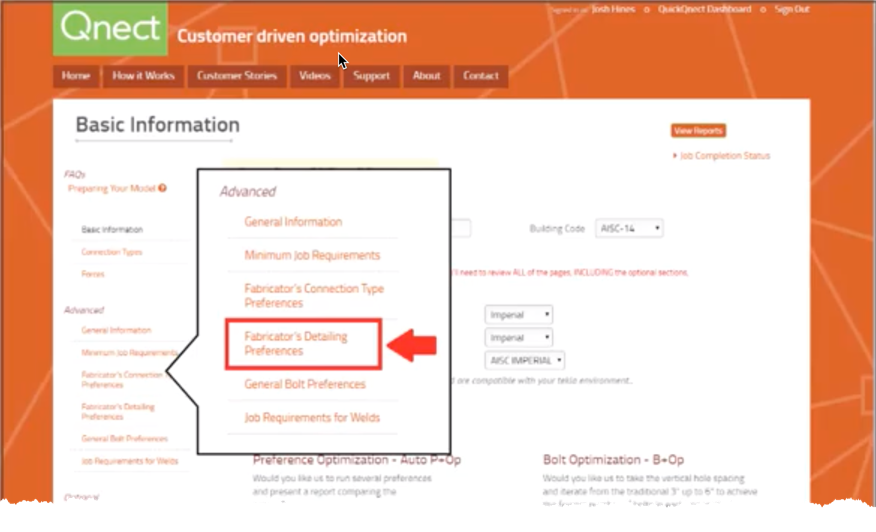
To be more specific this is a Preference Setting update that focuses on the Global Shear Plate and Single Angle Placement.
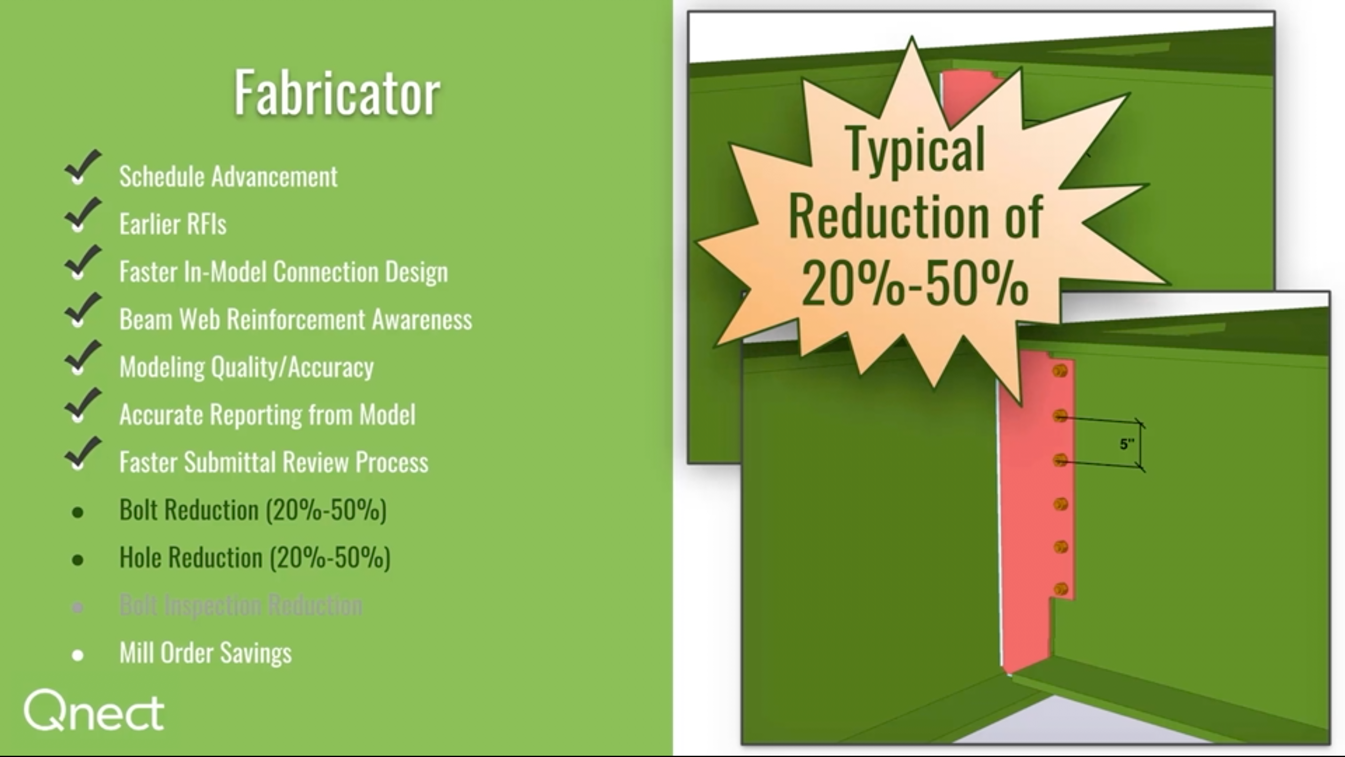
Last week, we posted about ROI for the Detailer. This week, our post focuses on the Fabricator. Now, some structural steel fabricators will detail in...
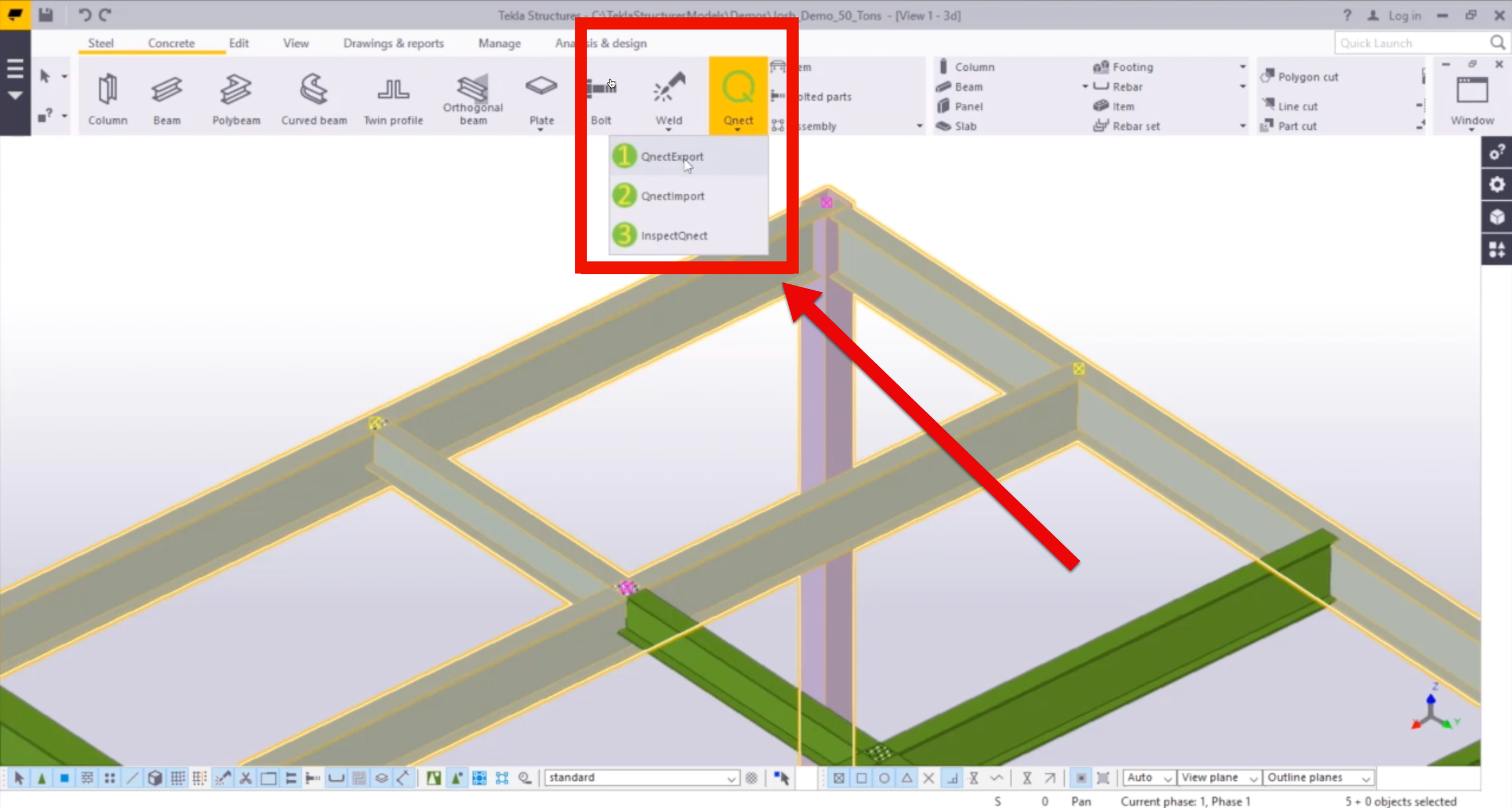
For this week's Tech Tuesday, we dive into Qnect’s Button 3. Button 3 offers a number of productivity tools for QuickQnect users. You can use it to...